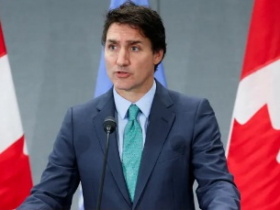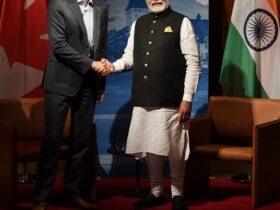The demand for U.S. visitor visas from Canada has surged dramatically, leading to longer wait times for visa appointments and a sharp rise in online scams preying on anxious applicants. American officials report that thousands of visa seekers have fallen victim to fraudulent schemes, with scammers promising faster access to appointments in exchange for a fee, only to hijack applicants’ accounts and block their access.
According to Aaron Luster, consul section chief at the U.S. Consulate General in Vancouver, the number of people being ensnared by these scams is alarmingly high. “Every day we receive inquiries from visa applicants who are victims,” Luster said. These scams typically involve unscrupulous agents who advertise expedited visa appointments for a fee. Once an applicant provides their U.S. visa application account information, the scammer takes control of the account, leaving the applicant locked out and unable to proceed with their application. “It charges a fee to someone for absolutely no value,” explained Julie Stufft, U.S. State Department deputy assistant secretary for visa services, who called the practice a “complete scam.”
These fraudulent activities have taken root in regions where there is a long wait for visa appointments. Canada, despite its close ties with the U.S., is not immune. The U.S. State Department’s website shows staggering wait times for visitor visa interviews across Canadian cities—up to 900 calendar days in Toronto, 777 days in Vancouver, 872 days in Calgary, 840 days in Halifax, and 850 days in Ottawa. This is a significant increase in demand, fueled by the post-pandemic rebound and the growing number of permanent and temporary residents in Canada who require visas to visit the United States.
In 2023, Canada’s population growth reached unprecedented levels, driven largely by immigration. The number of permanent residents admitted yearly has risen from 341,000 in 2019 to 471,771 in 2023. Meanwhile, the temporary resident population, including study and work permit holders, has nearly tripled, reaching almost 2.8 million by mid-2024. This surge in population has contributed to the rising demand for U.S. visas, as many of these new residents need visas to travel south of the border for leisure, family visits, or business purposes.
The U.S. embassy in Ottawa and its consulates across Canada processed a record 230,000 visa appointments last year, surpassing pre-COVID levels. “The demand we’re seeing in Canada is new for a country where Canadians and Americans can travel so freely on our very large shared land border,” Stufft noted, highlighting the unusual spike in applications.
To address the growing backlog, U.S. visa posts in Canada have ramped up staffing and introduced new measures to enhance the visa appointment scheduling system. One such initiative is a new system that prioritizes applicants who have been waiting the longest, offering them first access to newly available appointment slots due to cancellations or increased staffing. “We’re trying to give those people first priority at the new capacity that we created … That greatly reduces that wait,” Luster said.
In addition to these efforts, U.S. officials have launched a pilot project allowing visa holders already in the U.S. to renew their visas from within the country, saving them from having to leave and reapply abroad. This program, currently available to those who originally applied in Canada, will be made permanent in 2025. “They were able to stay in the United States, mail in that visa, and get it back in a very short time period from us and then have the security to leave the country again knowing that they have a valid visa,” Stufft explained.
Despite these efforts, not all visa applicants are successful, and some of those who are denied may attempt to enter the U.S. illegally. U.S. Customs and Border Protection reported 191,602 “encounters” with migrants caught entering the U.S. without visas or proper travel documents at the northern land border from Canada in 2023, a sharp increase from 135,607 in 2022 and just 37,186 in 2021, when travel restrictions were still in place due to the pandemic.
The issue is compounded by the differing visa requirements between Canada and the U.S. A traveler may need a visa to enter the U.S. but not Canada, and vice versa. This inconsistency has contributed to irregular migration flows, with some individuals flying into the country with looser visa requirements and then attempting to cross into the other nation illegally. Stufft declined to comment on whether there is a need to better align the visa requirements between the two countries but emphasized the strong collaboration between the U.S. and Canadian governments at border crossings.
“There is incredible collaboration between our two governments at these border crossings and just amazingly professional work on a very hard job and a very large land border being done by our colleagues there,” she said. “From the visa process, our job is to screen those folks who want to come in with a U.S. visa and enter the United States legally.”
As the demand for U.S. visitor visas from Canada continues to rise, both governments are working to manage the situation while protecting applicants from falling victim to scams. American officials urge visa applicants to remain vigilant and use only official channels to secure their appointments. With the introduction of new initiatives and increased staffing, it is hoped that the backlog will ease and legitimate travelers will face fewer obstacles in obtaining the necessary documents to cross the border.













Leave a Reply